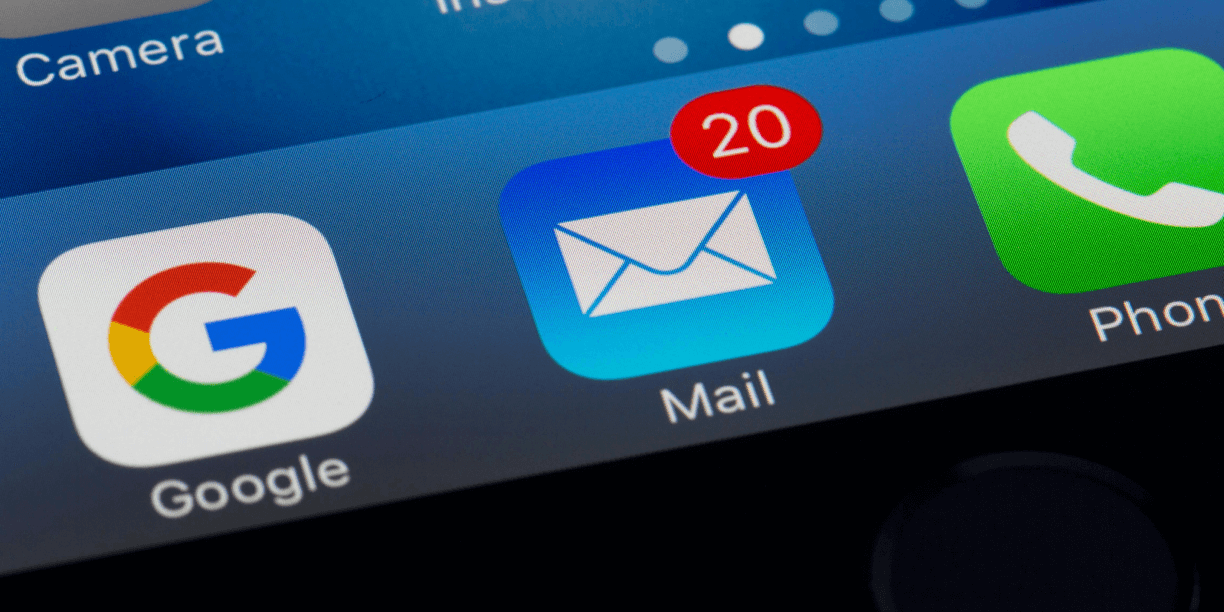Nonprofit guide to writing engaging communication plans

When a nonprofit organization only emails supporters during big campaigns, they miss out on opportunities to build real connections, share their vision, and grow strong relationships. A good nonprofit communications plan keeps supporters in touch throughout the year, not only when asking for donations.
This guide gives you a simple, step-by-step way to keep your communications channels open, steady, and meaningful. We’ve included eight email templates you can use and change to fit your needs. These are more than messages—they’re strategic communications touchpoints that build trust, grow your target audience, and boost your fundraising.
It takes work at the start, but the results are measurable: more loyal donors, stronger stakeholder engagement, and better nonprofit fundraising.
Why year-round nonprofit communications matter
You work hard to build a base of potential donors, volunteers, and supporters. However, without regular, effective communication, it’s easy to lose momentum—and people. Retention takes intention.
Engaging supporters throughout the year does more than bring donations. It creates a cycle of involvement, advocacy, and action. When your target audience hears from you regularly—and with a clear purpose—they start to feel part of your nonprofit’s mission. They become more than donors—they become champions for your cause.
Pro Tip: Acquiring new donors costs five times as much as keeping the ones you already have.
The good news? Email marketing makes ongoing outreach easier to manage and scale. When done right, your communications plan becomes part of how your organization works.
How to build a nonprofit communications strategy that works
An effective nonprofit communications strategy has a few key goals:
- Connect with your supporters often and on purpose.
- Personalize messaging based on donor personas.
- Build stronger relationships over time.
- Keep your nonprofit’s mission front and center.
- Align every message with your communications goals.
This means planning your email marketing and outreach calendar before the year begins. It means thinking beyond donations. And it means using smart goals—goals that are specific, measurable, attainable, relevant, and time bound.
8 ways to keep supporters engaged all year long
The email templates below focus on a few key moments in your nonprofit’s year when communications efforts matter most. Use them to guide your strategic communications and get better results.
1. Share progress updates with impact
Donors want to know their gifts made a difference. Regular updates show the good they helped create—and keep them involved. Whether it’s a quarterly milestone or your yearly report, these updates build trust and transparency.
Why it matters:
Updates support your nonprofit marketing and fundraising by showing impact. They’re also a chance to tell real stories about those you help.
When to send:
Every few months or after big initiatives or milestones.
Sample email: Progress update
Subject: Thanks for a great year! Dear [First name], Thanks to you, [Nonprofit] [mission statement] last year! [Give a specific example of your impact.] Your support made this possible. See our full impact in the annual report. CTA: Check out our impact Sincerely, [Name] [Nonprofit] [Email]
2. Celebrate holidays and cause awareness days
A short, timely message to meet the moment keeps you part of the conversation and shows supporters they’re seen and valued, even when you’re not making an ask.
Why it matters:
These emails keep your nonprofit visible, friendly, and connected to what’s happening in the world.
When to send:
On big holidays, cause-based days, or fun social media holidays.
Sample email: National holiday or cause-based day
Subject: Celebrate [national holiday or cause-based day] with us!
Dear [First name],
[National holiday or cause-based day] is coming! We’re celebrating [mission statement].
Snap a photo of [beneficiaries] and tag [social media handle and applicable cause or holiday hashtags]. We’ll share our favorites, and award a [prize on offer] to one lucky winner.
Let’s celebrate [beneficiaries], and the community that helps them thrive.
CTA: Donate today
Sincerely,
[Name]
[Nonprofit]
[Email]
3. Maximize event communication
Your events—galas, walkathons, webinars—are more than fundraisers. When planned well, your communications are chances to build strong relationships.
Why it matters:
Emails help you promote events, boost attendance, and follow up afterward. This helps you with project management and outreach.
When to send:
Before, during, and after every event.
Sample email: Post-event update
Subject: [Event] was a huge success!
Dear [First name],
Thanks for joining us at the [event]. Together, we raised $[dollar amount]—enough to [measure impact].
We’d love your feedback. What did you enjoy? How can we improve?
CTA: Share your thoughts
Plus, don’t miss our photo gallery showing the joy you helped create.
CTA: View photos
Sincerely,
[Name][Project]
[Email]
4. Say thank you—for no reason
Sometimes the simplest message is the best: a thank-you. No campaign, no ask—only sincere appreciation.
Why it matters:
Thank-you’s build donor loyalty and show your supporters you care.
When to send:
Anytime, especially when you have no other message planned.
Sample email: Thank you
Subject: Thank you for making what we do possible!
Dear [First name],
We wanted to share a quick story to brighten your day as much as you’ve brightened ours.
[Share an impact story].
You made that happen. Thank you.
CTA: Learn more
Sincerely,
[Name]
[Nonprofit]
[Email]
5. Launch Giving Tuesday the right way
Giving Tuesday is a huge opportunity for nonprofit fundraising. Donors across the United States contributed a record-breaking $3.6 billion in 2024 alone. However, you need more than one email. Build a full campaign with messages that create urgency and show the power of giving together.
Why it matters:
Giving Tuesday is one of the highest-performing fundraising days of the year. Your communications plan should match that.
When to send:
Start 10 days before. Send reminders during the day. Follow up with the results.
Sample email: Giving Tuesday morning
Subject: Today is Giving Tuesday!
Dear [First name],
[Nonprofit] wants to raise $[dollar amount] today to [mission statement].
If you give before noon, [describe impact to your cause and beneficiaries, including partner matches].
[Give examples to demonstrate the impact of set donation amounts].
CTA: Donate now
Please share this with your friends and help us reach our goal.
Sincerely,
[Name]
[Nonprofit]
[Email]
6. Drive year-end giving with gratitude and goals
From September to December, your messages should increase. This is when nonprofits raise most of their money. And since 10% of annual giving occurs on the last three days of the year, it’s crucial to stay top of mind through December 31. Link your messages to holidays, milestones, and goals.
Why it matters:
Year-end is a key fundraising time. Clear communications goals and steady outreach are critical.
When to send:
Multiple times in Q4, especially the last week of December.
Sample email: Thanksgiving message
Subject: We’re thankful for you Dear [First name], Before we start cooking and spending time with family, we want to say thank you. Your support helps us [mission statement]. Thank you for being part of our organization’s mission. We appreciate your generosity, time, and energy. Wishing you a warm and joyful Thanksgiving. Sincerely, [Nonprofit] [Email]
[Name]
7. Offer hands-on, volunteer opportunities
Promote volunteer opportunities to grow your reach and deepen your connection. Research shows that over 60% of volunteers donate to the organizations they support, with volunteers contributing 10%-20% more in financial donations than nonvolunteers.
Why it matters:
Volunteers often become donors and strong supporters.
When to send:
At the start of a new season or when you need more help.
Sample email: Volunteer recruitment
Subject: Become a member of our family Passionate about [mission statement]? So are we. And we need your help. We’re looking for volunteers to help with [examples of ways volunteers can help]. Have a few hours? We have a way for you to make a difference. Join a loving community and see real impact. CTA: Sign up to volunteer Sincerely, [Name] [Nonprofit] [Email]
8. Celebrate your organization’s anniversary
Your organization’s anniversary is a fun milestone to celebrate with your dedicated community. In addition to thanking your donors, take a stroll down memory lane and show how much progress your nonprofit has made in its mission since it started.
Sample email: Organization anniversary
Subject: We’re officially a [age milestone] nonprofit
Can you believe it’s been [number] years since we first opened the doors of [Nonprofit]?
Neither can we. In that time, we’ve helped [description of impact], all thanks to generous supporters like you.
To celebrate this exciting milestone, we’re holding a [event]. [Give details about the event, such as games, prizes, and special guests].
Admission is free, but donations are always welcome! Check the event page for more info and to RSVP. We can’t wait to celebrate [number] years of [Nonprofit] with you!
CTA: Learn more
Now, let’s take a walk down memory lane and revisit some of our favorite stories and moments from the last [number] years.
[Embedded Video]
Sincerely,
[Name]
[Nonprofit]
[Email]
Pro tips for email communications
- Keep in mind this guide’s email templates focus on communications outside of major campaigns. Distribute branded emails tied to specific campaigns separately.
- Time your emails strategically. Save non campaign check-ins for slower times and prioritize appeals around big events.
- Follow a consistent cadence. Be predictable so supporters know what to expect and when to look for your messages.
- Look at donor profiles and tailor your communications for different donor segments.
- Always include a donate button or link somewhere in your emails, even if the main goal is to inform and connect.
- Use visual assets—like photos, videos, and graphics—to remind donors why your cause matters emotionally.
- Keep your content digestible. Send short emails and use visuals for longer stories.
- Use consistent branding so recipients know if an email is campaign-specific or a general update.
- Put beneficiaries front and center with stories that build emotional ties and keep donors invested.
Consistent communication improves donor retention
Use these templates to build your annual email plan and achieve the right balance with the content you send. Using a wide variety of strategies and reasons to connect with your donor base year-round will strengthen their emotional connection to your nonprofit.
The more connected your supporters feel, the more willing they’ll be to donate when it counts.
We can help. Get connected with our team of experts today to learn how.
Subscribe to the GoFundMe Pro blog
Get the latest fundraising tips, trends, and ideas in your inbox.
Thank you for subscribing
You signed up for emails from GoFundMe Pro
Request a demo
Learn how top nonprofits use GoFundMe Pro to power their fundraising.



